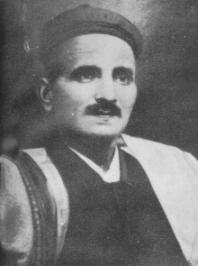

The British Raj - Page 2
Development of Tumri
Thumri has several varieties such as the Kajri sung during the monsoon, the Hori sung during the colorful festival of Holi and other harvest melodies such as the Chaiti, Saawan, Jhoola etc
Development of Ghazal
Not surprisingly, most well known Ghazal singers of 19th and 20th centuries were Thumri exponents as well like Begum Akhar and Barkat Ali Khan. Even Khayal singers like Ustad Abdul Karim Khan and Ustad Bade Ghulam Ali Khan occassionally sang ghazals. In the later part of 20th century Ghazal went through dramatic changes, finally losing much of its classical roots and imitating popular film songs in style.
Chaturpandit Bhatkande
He researched prevalent practices in various gharanas in early 20th century north India. This followed his trip to south Indian musical centers where he learnt about the work of Venkatmukhi and the classification of Raagas into 72 Melas. His treatise on Hindustani music was presented in 4 volumes of his Marathi book Hindustani Sangeetha Padhathi between 1909 - 1932. He described hundred and eighty ragas and classified them into ten basic thaats, or musical scales or frameworks -Bilawal, Kalyan, Khamaj, Bhairav, Poorvi, Marwa, Kafi, Asavari, Bhairavi and Todi. He also devised musical notation that could be used to write music. That was perhaps the first attempt at writing music in India ... where for thousands of years music had been orally transmitted. He also collected more than two thousand compositions from different gharanas and brought them out into the public sphere. He helped starting a college of music, Sangeeta Maha Vidyalaya in Baroda using his system of music teaching. He trained music teachers. He wrote graded text- books on music. They are known as Kramic Putstaka Malika. With the help of the Maharaja of Baroda, Bhatkhande convened in 1916 the first All-India Music Conference in Baroda, a first of its kind. In the 5th All-India Music Conference in 1925 it was decided to open a College of Music at Lucknow and the following year the Marris College of Hindustani Music was established in the name of Governor of the province. Bhatkhande used to supervise the work of this college in its early years.
V D Pulaskar and Gandharva Mahavidhyalaya
| Musical Nirvana . com | Top | Last Updated on 21-Feb-03 |








